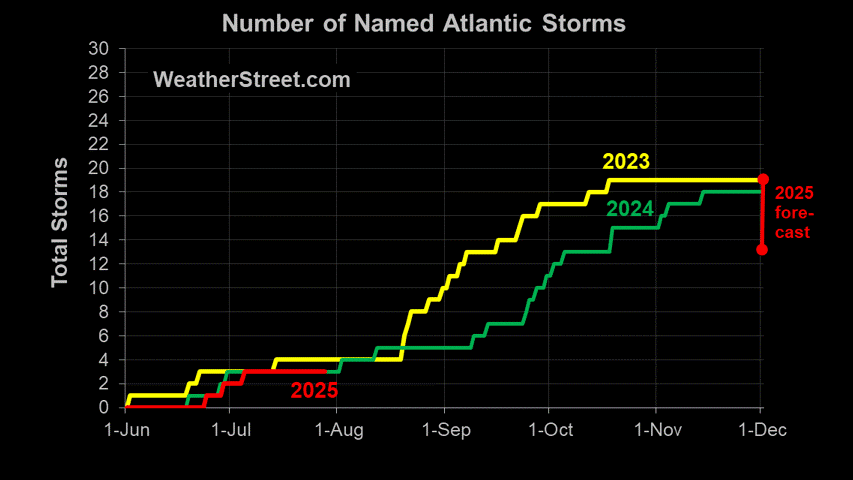Developing La Nina means potential for more tropical weather
Forecasters warned Tuesday that a La Nina weather pattern - the nasty flip side of El Nino - is brewing, bringing with it the threat of more hurricanes for the Atlantic.This can be an issue as the 2007 hurricane season approaches. La Nina is truly the flip side when it comes to hurricane patterns. 2006 was a very mild year for hurricanes mostly due to the development of an El Nino weather patter in the Pacific during the middle of the summer. As a result the development of tropical systems was squelched during the time of year when such activity should have peaked.
Now if a La Nina is developing, it has the potential to promote the development of tropical systems as therefore may result in a more active than typical hurricane season.
Our focus is primarily on tropical weather and long term climate issues. I have a hard time thinking of drought when I live in a swampy coastal region, but Texas was certainly quite dry all summer. Increased potential for drought just adds to the concerns that this La Nina can bring.Officials at the National Oceanic and Atmospheric Administration announced the official end of a brief and mild El Nino that started last year. That El Nino was credited with partially shutting down last summer's Atlantic hurricane activity in the midst of what was supposed to be a busy season.
"We're seeing a shift to the La Nina, it's clearly in the data," NOAA Administrator Conrad Lautenbacher said. La Nina, a cooling of the mid-Pacific equatorial region, has not officially begun because it's a process with several months with specific temperature thresholds, but the trend is obvious based on satellite and ocean measurement data, he said.
"It certainly won't be welcome news for those living off the coast right now," Lautenbacher said. But he said that doesn't mean Atlantic seaboard residents should sell their homes.
Forecasters don't know how strong this La Nina will be. However, it typically means more hurricanes in the Atlantic, fewer in the Pacific, less rain and more heat for the already drought-stricken South, and a milder spring and summer in the north, Lautenbacher said. The central plains of the United States tend be drier in the fall during La Ninas, while the Pacific Northwest tends to be wetter in the late fall and early winter.
Of special concern is west Texas which is already in a long-term drought, which during a La Nina will likely get worse, Lautenbacher said.

Trackposted to Outside the Beltway, Perri Nelson's Website, The Random Yak, Adam's Blog, Big Dog's Weblog, basil's blog, Common Folk Using Common Sense, Stuck On Stupid, Leaning Straight Up, The Amboy Times, The Bullwinkle Blog, Jo's Cafe, Conservative Cat, Conservative Thoughts, Rightlinx, third world county, Allie Is Wired, stikNstein... has no mercy, Pirate's Cove, Blue Star Chronicles, Planck's Constant, The Pink Flamingo, Dumb Ox Daily News, Right Voices, and Gone Hollywood, thanks to Linkfest Haven Deluxe.











